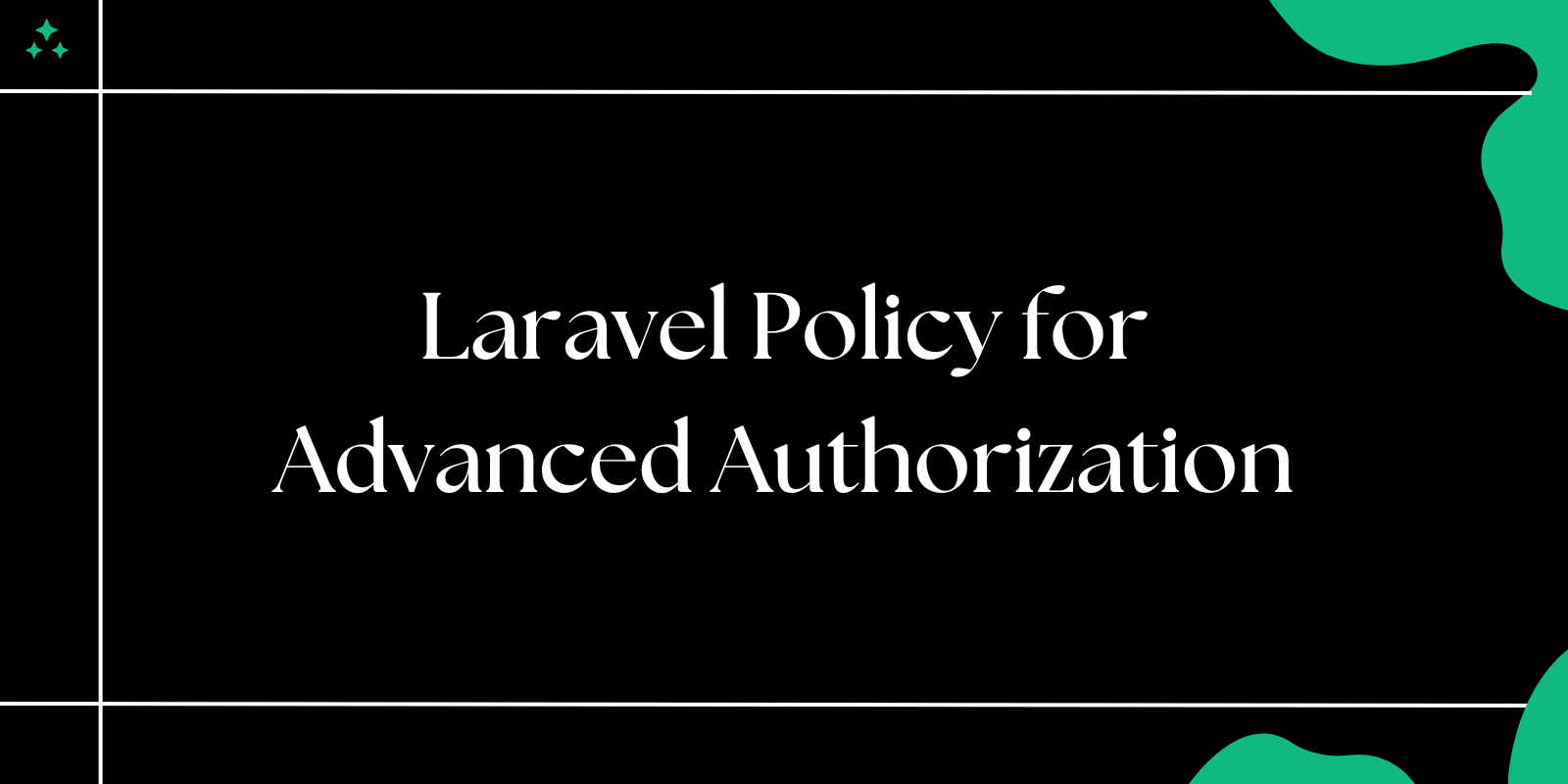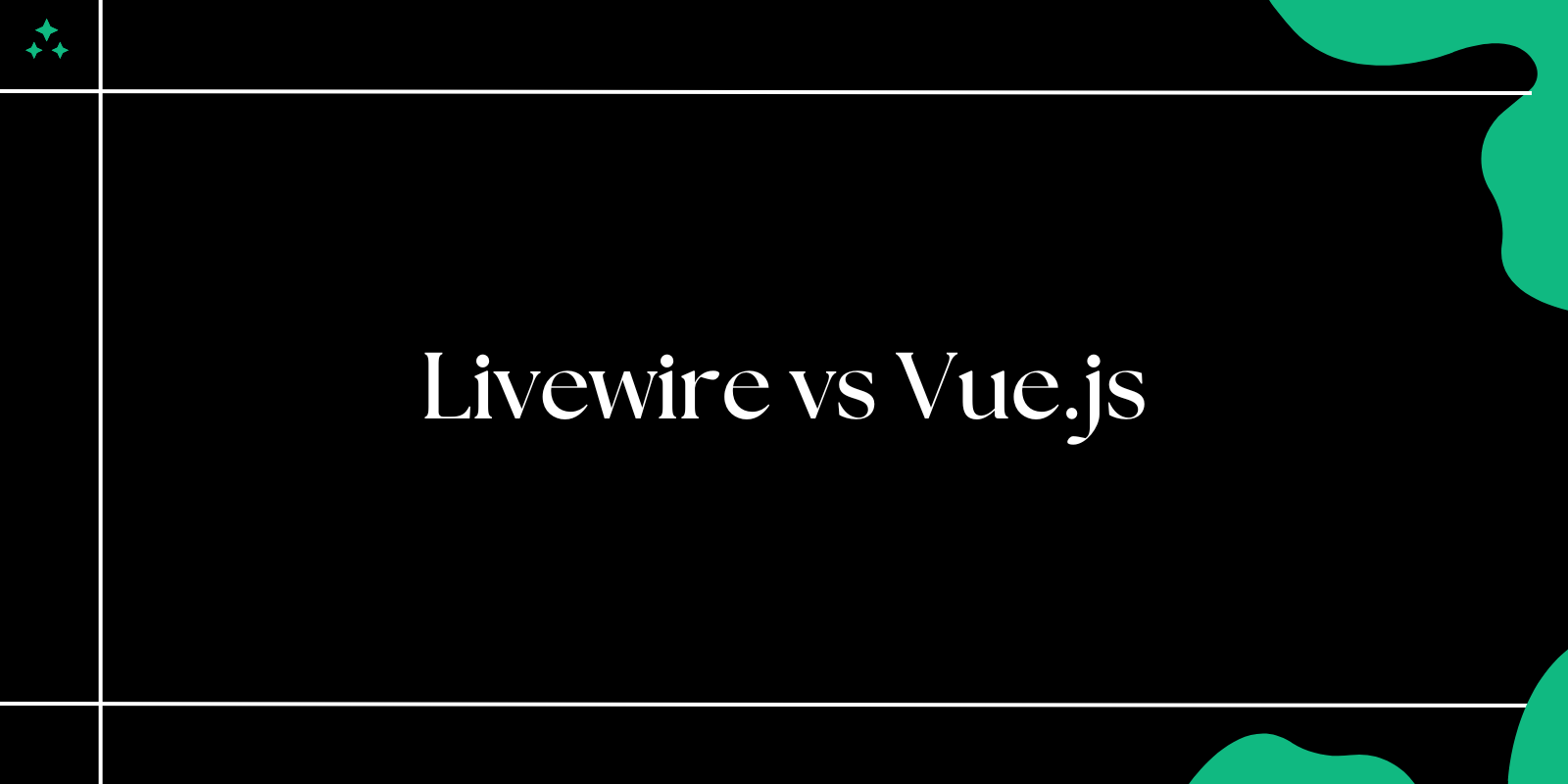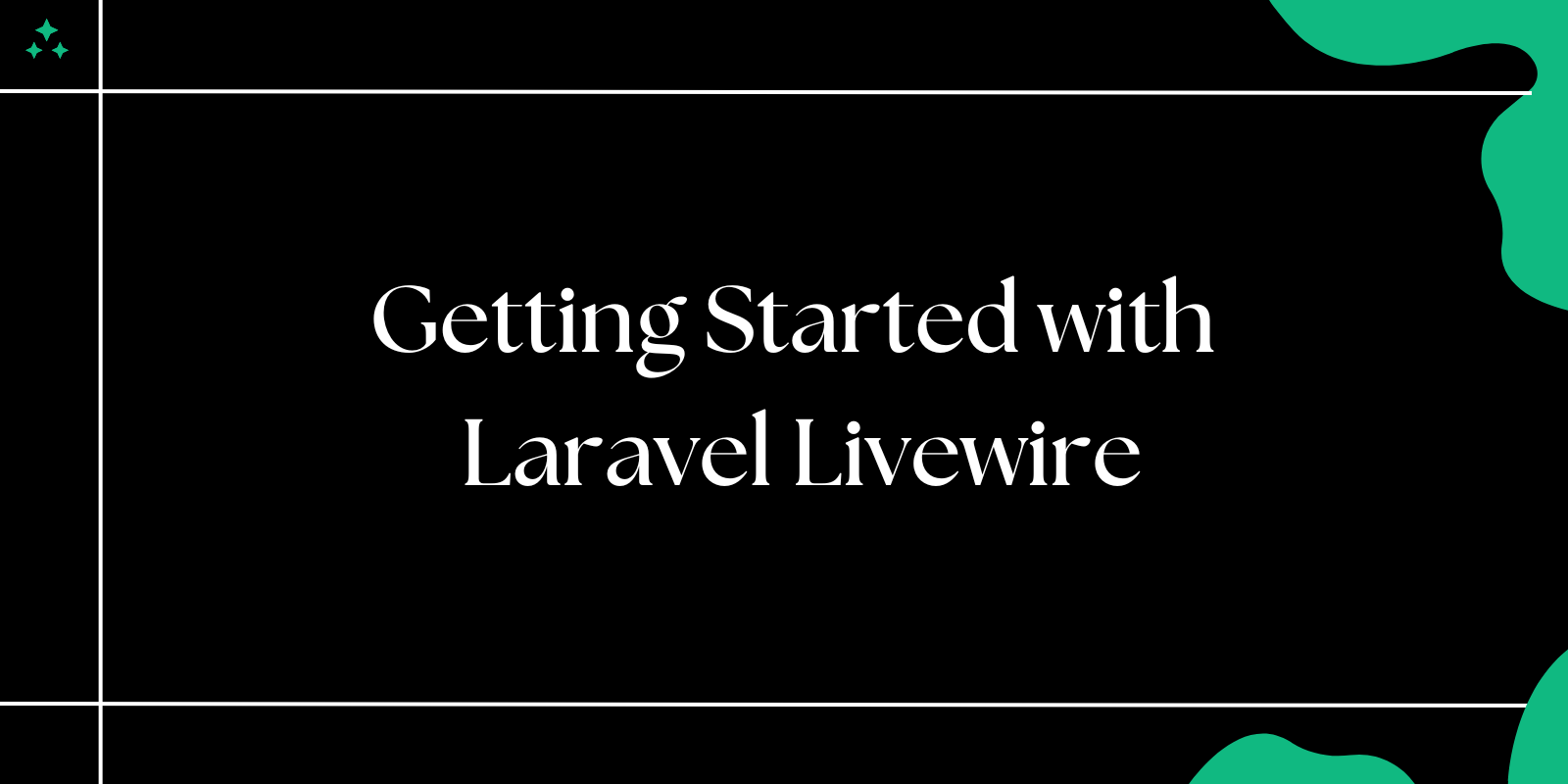Introduction
If you've been working with Laravel Livewire for a while, you've probably noticed that components have this magical ability to update themselves without page reloads. But have you ever wondered what's happening behind the scenes during those updates? That's where lifecycle hooks come in.
Think of lifecycle hooks as checkpoints in your component's life. Just like how we have setup and teardown phases when working with any framework, Livewire components go through specific stages, and hooks let you tap into those moments to run custom logic.
In this guide, we'll explore Livewire's lifecycle hooks, when to use them, and how to avoid common pitfalls that can trip you up.
What Are Lifecycle Hooks?
Lifecycle hooks are methods that Livewire automatically calls at specific points during a component's lifecycle. They give you control over what happens when your component is created, updated, or rendered.
Here's a simple mental model: every time a user interacts with your Livewire component (like clicking a button or typing in a form), Livewire goes through a series of steps to process that interaction and update the DOM. Lifecycle hooks let you inject your own code at various points in that process.
The Complete List of Lifecycle Hooks
Livewire provides several hooks, each serving a different purpose. Let's break them down in the order they typically execute:
| Hook | When It Runs | Common Use Cases |
|---|---|---|
mount() | Once when component is first created | Initialize properties, fetch initial data, set default values |
hydrate() | On every request (except the first) | Re-establish non-persistent state, reconnect to services |
updating($name, $value) | Before a specific property updates | Validate or transform data before it's set |
updated($name, $value) | After a specific property updates | React to changes, trigger side effects, update related properties |
rendering() | Just before the component renders | Last-minute data preparation |
rendered() | After the component has rendered | Trigger JavaScript events, log analytics |
dehydrate() | Before the component state is sent to frontend | Clean up sensitive data, prepare state for transmission |
Mount: The Starting Point
mount() is your component's constructor. It runs once when the component is first loaded on the page. This is where you initialize things.
class UserProfile extends Component
{
public $user;
public $posts;
public $filterStatus = 'active';
public function mount($userId)
{
$this->user = User::findOrFail($userId);
$this->posts = $this->user->posts()
->where('status', $this->filterStatus)
->latest()
->get();
}
public function render()
{
return view('livewire.user-profile');
}
}
💡 Tip: Parameters passed to your component (like route parameters) are automatically injected into
mount(). You can also use dependency injection here, just like in Laravel controllers.
What NOT to Do in Mount
Don't fetch data that will change based on component interactions inside mount(). If a property needs to update dynamically, fetch it in the render() method or in computed properties instead.
// ❌ Bad: This won't update when $filterStatus changes
public function mount()
{
$this->posts = Post::where('status', $this->filterStatus)->get();
}
// ✅ Good: Use render() or a computed property
public function render()
{
return view('livewire.user-profile', [
'posts' => Post::where('status', $this->filterStatus)->get()
]);
}
Hydrate and Dehydrate: The Request Lifecycle
Every Livewire request goes through a hydration and dehydration cycle. This is how Livewire maintains state between requests.
Hydrate runs at the start of every subsequent request (after the initial load). It's like waking up the component from its serialized state.
Dehydrate runs at the end of every request before sending the state back to the frontend.
class ShoppingCart extends Component
{
public $items = [];
protected $cartService;
public function hydrate()
{
// Reconnect to services that can't be serialized
$this->cartService = app(CartService::class);
}
public function dehydrate()
{
// Clean up before serialization
unset($this->cartService);
}
public function addItem($productId)
{
$this->cartService->add($productId);
$this->items = $this->cartService->getItems();
}
}
⚠️ Warning: Livewire serializes your component's state between requests. Objects like database connections, service instances, or file handles can't be serialized. Use
hydrate()to reconnect to these resources anddehydrate()to clean them up.
Updating and Updated: Reacting to Property Changes
These hooks fire when properties change. You can use them globally or target specific properties.
Global Hooks
public function updating($name, $value)
{
// Runs before ANY property updates
logger("Property {$name} is about to change to: {$value}");
}
public function updated($name, $value)
{
// Runs after ANY property updates
$this->dispatch('property-changed', name: $name);
}
Property-Specific Hooks
This is where things get powerful. You can hook into specific property updates by following a naming convention:
class SearchComponent extends Component
{
public $query = '';
public $results = [];
public function updatingQuery($value)
{
// Runs before 'query' updates
$value = trim($value);
}
public function updatedQuery($value)
{
// Runs after 'query' updates
if (strlen($value) < 3) {
$this->results = [];
return;
}
$this->results = Product::search($value)->take(10)->get();
}
}
The naming convention is: updating{PropertyName} and updated{PropertyName}. Notice the capital letter after the prefix.
Nested Properties
You can even target nested properties using dot notation:
public $settings = [
'notifications' => [
'email' => true,
'sms' => false
]
];
public function updatedSettingsNotificationsEmail($value)
{
if ($value) {
// Send a confirmation email when email notifications are enabled
$this->sendEmailConfirmation();
}
}
💡 Tip: Use
updated{PropertyName}for things like search-as-you-type, form validation, or triggering calculations when a value changes.
Rendering and Rendered: Before and After the View
rendering() and rendered() wrap around the actual view rendering process.
public function rendering($view, $data)
{
// Runs before the view is rendered
// Last chance to modify data going to the view
$data['timestamp'] = now();
}
public function rendered($view, $html)
{
// Runs after rendering
// You can dispatch browser events here
$this->dispatch('component-rendered');
}
I rarely use rendering(), but rendered() is useful when you need to trigger JavaScript after a component update:
public function rendered()
{
$this->dispatch('init-tooltips');
}
Then in your JavaScript:
Livewire.on('init-tooltips', () => {
// Initialize tooltip library
tippy('[data-tippy-content]');
});
Real-World Example: Building a Product Filter
Let's put it all together with a practical example:
class ProductFilter extends Component
{
public $category = 'all';
public $priceRange = [0, 1000];
public $inStock = false;
public function mount($defaultCategory = 'all')
{
$this->category = $defaultCategory;
}
public function updatedCategory()
{
// Reset price range when category changes
$this->priceRange = [0, 1000];
}
public function updatedPriceRange($value)
{
// Ensure min is not greater than max
if ($value[0] > $value[1]) {
$this->priceRange = [$value[1], $value[0]];
}
}
public function rendered()
{
// Reinitialize range slider after each render
$this->dispatch('init-range-slider');
}
public function render()
{
$products = Product::query()
->when($this->category !== 'all', fn($q) => $q->where('category', $this->category))
->whereBetween('price', $this->priceRange)
->when($this->inStock, fn($q) => $q->where('stock', '>', 0))
->get();
return view('livewire.product-filter', [
'products' => $products
]);
}
}
Common Mistakes and How to Avoid Them
Mistake 1: Putting Dynamic Logic in Mount
// ❌ This won't update when filters change
public function mount()
{
$this->products = Product::where('category', $this->selectedCategory)->get();
}
// ✅ This will
public function render()
{
return view('livewire.products', [
'products' => Product::where('category', $this->selectedCategory)->get()
]);
}
Mistake 2: Forgetting That Updated Hooks Run on Every Change
// ❌ This creates an infinite loop
public function updatedSearchQuery($value)
{
$this->searchQuery = strtolower($value); // This triggers updatedSearchQuery again!
}
// ✅ Transform before the update happens
public function updatingSearchQuery($value)
{
return strtolower($value);
}
Mistake 3: Overusing Lifecycle Hooks
Not everything needs a hook. If you're just displaying data based on a property, use computed properties or do it directly in the render method:
// ❌ Overkill
public $status;
public $statusLabel;
public function updatedStatus($value)
{
$this->statusLabel = $this->getStatusLabel($value);
}
// ✅ Simpler
public $status;
public function getStatusLabelProperty()
{
return match($this->status) {
'active' => 'Active',
'pending' => 'Pending',
default => 'Inactive'
};
}
Performance Considerations
Lifecycle hooks run on every request, so keep them lean. Heavy operations in hooks can slow down your component significantly.
⚠️ Warning: Avoid expensive database queries or API calls in
updating()orupdated()hooks that fire frequently. Consider debouncing user input or caching results.
// Debounce search queries
public function updatedSearchQuery()
{
// This will wait 300ms after the user stops typing
$this->dispatch('search-debounced');
}
And in your JavaScript:
let timeout;
Livewire.on('search-debounced', () => {
clearTimeout(timeout);
timeout = setTimeout(() => {
Livewire.dispatch('performSearch');
}, 300);
});
When Should You Use Each Hook?
Here's a quick decision tree:
- Need to initialize data once? Use
mount() - Need to validate/transform before a property changes? Use
updating()orupdating{PropertyName}() - Need to react after a property changes? Use
updated{PropertyName}() - Need to reconnect to services on each request? Use
hydrate() - Need to clean up before serialization? Use
dehydrate() - Need to trigger JavaScript after render? Use
rendered()
Wrapping Up
Livewire's lifecycle hooks give you fine-grained control over your component's behavior. The key is knowing when to use them and when simpler alternatives (like computed properties or direct logic in render()) make more sense.
Start with mount() for initialization and updated{PropertyName}() for reacting to changes. That covers 90% of use cases. As you encounter more complex scenarios, you'll naturally discover when the other hooks become necessary.
Remember, the goal isn't to use every hook in every component. It's to use the right hook at the right time to keep your code clean, performant, and maintainable.



